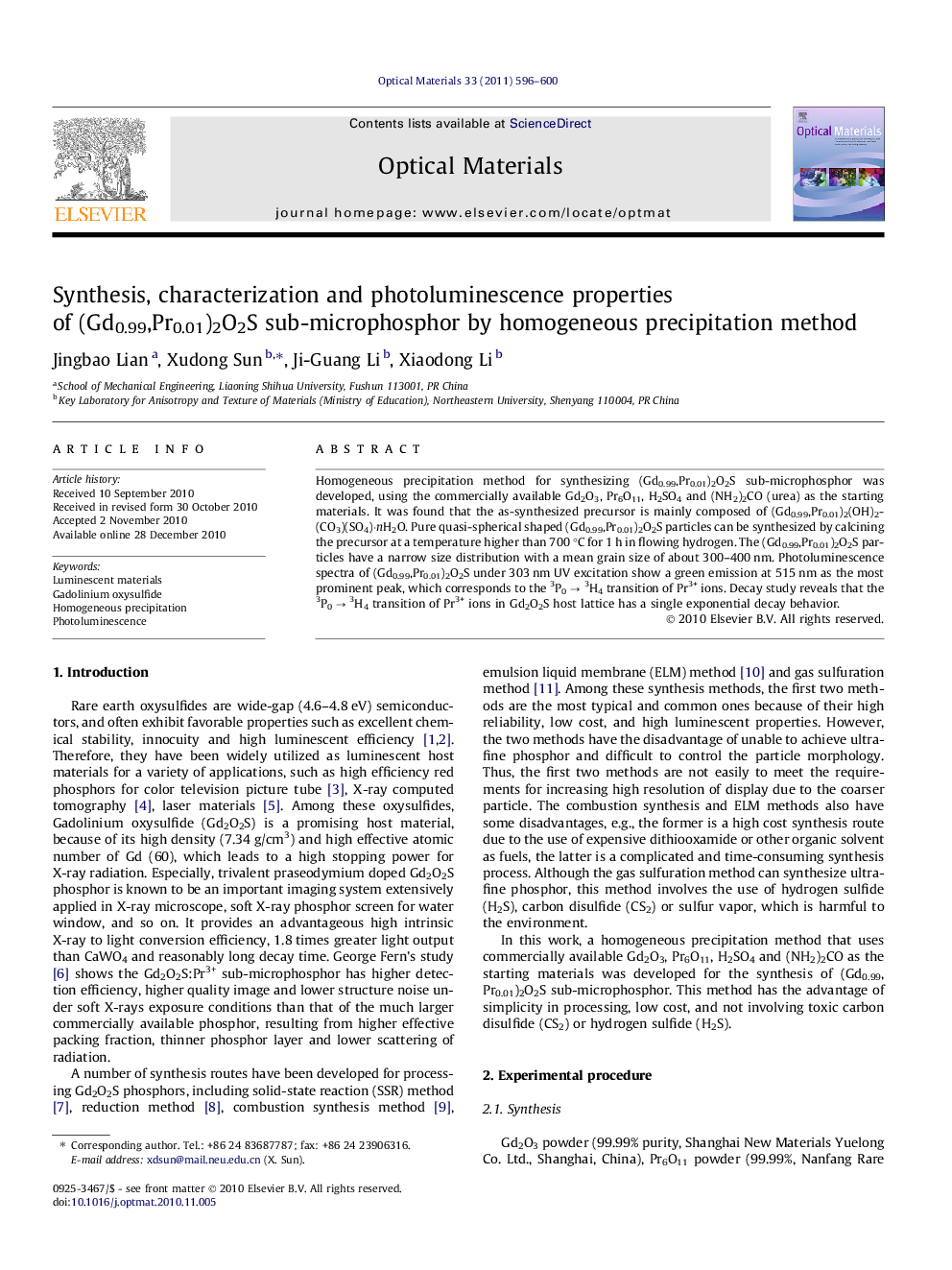| Article ID | Journal | Published Year | Pages | File Type |
|---|---|---|---|---|
| 1495785 | Optical Materials | 2011 | 5 Pages |
Homogeneous precipitation method for synthesizing (Gd0.99,Pr0.01)2O2S sub-microphosphor was developed, using the commercially available Gd2O3, Pr6O11, H2SO4 and (NH2)2CO (urea) as the starting materials. It was found that the as-synthesized precursor is mainly composed of (Gd0.99,Pr0.01)2(OH)2(CO3)(SO4)·nH2O. Pure quasi-spherical shaped (Gd0.99,Pr0.01)2O2S particles can be synthesized by calcining the precursor at a temperature higher than 700 °C for 1 h in flowing hydrogen. The (Gd0.99,Pr0.01)2O2S particles have a narrow size distribution with a mean grain size of about 300–400 nm. Photoluminescence spectra of (Gd0.99,Pr0.01)2O2S under 303 nm UV excitation show a green emission at 515 nm as the most prominent peak, which corresponds to the 3P0 → 3H4 transition of Pr3+ ions. Decay study reveals that the 3P0 → 3H4 transition of Pr3+ ions in Gd2O2S host lattice has a single exponential decay behavior.
Research highlights► A homogeneous precipitation for synthesizing (Gd0.99,Pr0.01)2O2S sub-microphosphor. ► Pure quasi-spherical (Gd0.99,Pr0.01)2O2S particles with narrow size distribution. ► No toxic carbon disulfide or hydrogen sulfide in the synthesis process. ► High luminescence intensity and suitable decay time.
